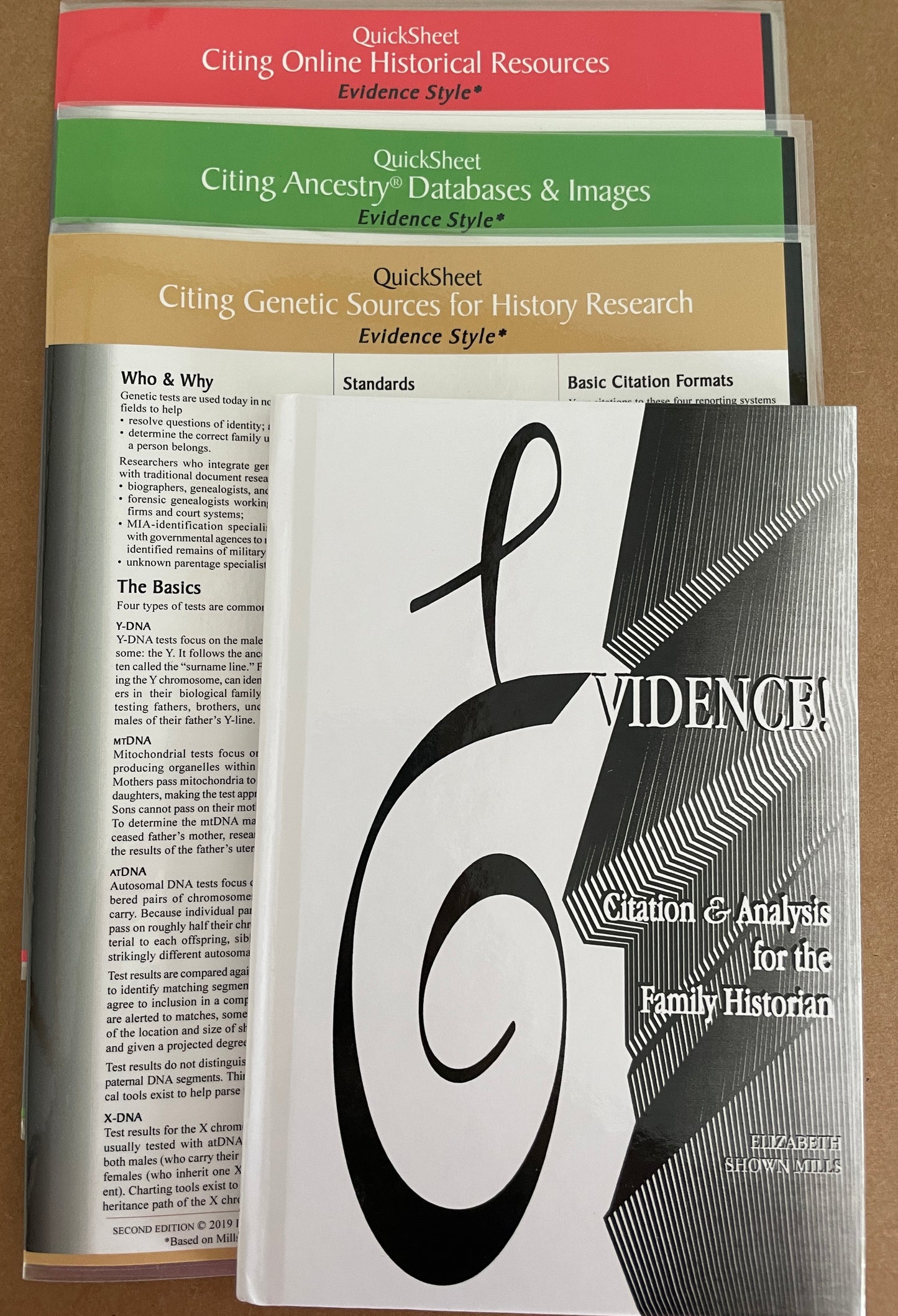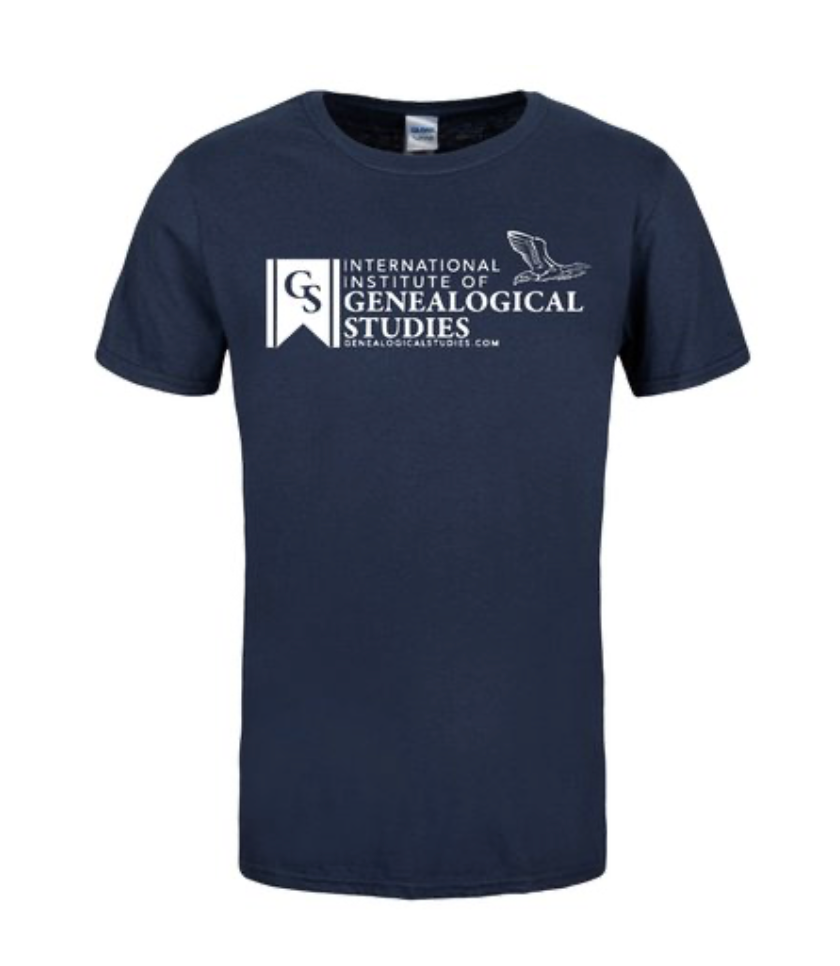1
/
of
1
GenealogicalStudies
Cite Your Sources Package
Cite Your Sources Package
Regular price
$66.00 USD
Regular price
Sale price
$66.00 USD
Unit price
/
per
Shipping calculated at checkout.
Couldn't load pickup availability
Elizabeth Shown Mills' stunning book, Evidence!, provides the family history researcher with a reliable standard for both the correct form of source citation and the sound analysis of evidence. In successful genealogical research, these two practices are inseparable, and the author's treatment of this little-understood concept is nothing short of brilliant. To quote the author, "Research, evidence, citation, and analysis are inseparable. Evidence is the vehicle that moves our research from curiosity to reality. Citation and analysis are the twin highways that get us there, smoothly and safely. Evidence! tries to strip away much of the confusion that researchers experience in this adventure. It offers a road map for beginners, who hope to avoid mistakes, and guideposts for the advanced, who already appreciate the need to map their own course precisely...." To quote one of the book's reviewers, "Not just every genealogist, but every historian as well, should own a copy. Evidence! is filled with useful information that is difficult to find elsewhere."--Grady McWhiney, Ph.D. Lyndon Baines Johnson Professor Emeritus, Texas Christian University.
Elizabeth Mills's QuickSheet provides a template for citing historical sources on the Internet. It also lays down rules to help you judge the reliability of these sources. Published in the form of a laminated folder, the QuickSheet contains a series of sample citations showing the correct way to identify online sources such as databases, census images, and digital books and articles.
Based on the premise that online sources are publications that have the same characteristics as printed publications, it provides rules and models for common record types such as passenger lists, vital records, and newspapers. Since a website is the online equivalent of a book, the QuickSheet shows you how to cite author/creator/owner of a website, title of the website, place (URL), date posted, and so forth.
Ancestry.com is the largest and most widely used genealogy site on the Internet. As an Ancestry.com user yourself, you’ve looked at databases with billions of names, so now you want to be sure you can get back to a specific record or lead others to the same record; and you need to identify your sources, to verify and cross-check them for accuracy, using the correct citations to Ancestry’s online databases and images.
Help is at hand with Elizabeth Mills’s fabulous new QuickSheet, which provides rules and models for citing the myriad databases and images you use on Ancestry.com. With this new QuickSheet, you’ll know instantly how to cite databases that include census records, vital records, passenger lists, city directories, and family trees; and how to cite images that include manuscripts, maps, newspapers, and online books and articles. In QuickSheet: Citing Ancestry.com Databases & Images you’ll find the standards you need for the correct citation of Ancestry sources, as well as help in judging the reliability of those sources.
For most Ancestry.com sources, sample citations are shown here in three styles: Source List Entry, Full Reference Note, and Short Reference Note, each showing you how to deal with author/creator, title, website, URL, date accessed, item type, source of sources, and so forth. Arranged in tabular format under each of these headings, the sample citations are easy to follow and can be applied to your specific needs in citing your sources.
Convenient for desktop use at home or in the library, the new QuickSheet, like its companion, QuickSheet: Citing Online Historical Resources Evidence! Style, is a heavily laminated sheet, folded to form a standard 8½” x 11” folder, and is designed for constant use.
Elizabeth Mills's QuickSheet provides a template for citing historical sources on the Internet. It also lays down rules to help you judge the reliability of these sources. Published in the form of a laminated folder, the QuickSheet contains a series of sample citations showing the correct way to identify online sources such as databases, census images, and digital books and articles.
Based on the premise that online sources are publications that have the same characteristics as printed publications, it provides rules and models for common record types such as passenger lists, vital records, and newspapers. Since a website is the online equivalent of a book, the QuickSheet shows you how to cite author/creator/owner of a website, title of the website, place (URL), date posted, and so forth.
Ancestry.com is the largest and most widely used genealogy site on the Internet. As an Ancestry.com user yourself, you’ve looked at databases with billions of names, so now you want to be sure you can get back to a specific record or lead others to the same record; and you need to identify your sources, to verify and cross-check them for accuracy, using the correct citations to Ancestry’s online databases and images.
Help is at hand with Elizabeth Mills’s fabulous new QuickSheet, which provides rules and models for citing the myriad databases and images you use on Ancestry.com. With this new QuickSheet, you’ll know instantly how to cite databases that include census records, vital records, passenger lists, city directories, and family trees; and how to cite images that include manuscripts, maps, newspapers, and online books and articles. In QuickSheet: Citing Ancestry.com Databases & Images you’ll find the standards you need for the correct citation of Ancestry sources, as well as help in judging the reliability of those sources.
For most Ancestry.com sources, sample citations are shown here in three styles: Source List Entry, Full Reference Note, and Short Reference Note, each showing you how to deal with author/creator, title, website, URL, date accessed, item type, source of sources, and so forth. Arranged in tabular format under each of these headings, the sample citations are easy to follow and can be applied to your specific needs in citing your sources.
Convenient for desktop use at home or in the library, the new QuickSheet, like its companion, QuickSheet: Citing Online Historical Resources Evidence! Style, is a heavily laminated sheet, folded to form a standard 8½” x 11” folder, and is designed for constant use.
1 review
Materials
Materials
Shipping & Returns
Shipping & Returns
Dimensions
Dimensions
Share


IIGS School T-shirts
Enjoy sharing your school with others. Great conversation starter to help preserve family history for all! Soft fabric, many sizes.
K
Kim Shay Having looked through these resources, I can see that they are going to be very helpful in my research/citations. I’m very thankful I purchased it.
